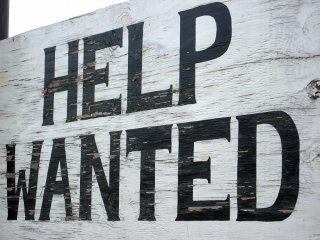America's Economy: Going "Part-Time"?
The recent employment report from the Bureau of Labor Statistics (BLS) showed the US economy generated 288,000 jobs, the unemployment rate continued to decline, and the participation in the labor force held steady. By all appearances, it was a blockbuster month for jobs. But one level deeper into the report, it becomes a bit more complicated. Jobs were created, but the question of their quality lingers.
To say the least, the quality was poor. The job gains were solely part-time; 799,000 part-time jobs were taken. Worse still, 523,000 full-time jobs were lost. In fairness, most of these part-time jobs were not inherently bad. The majority of the June gains were in what is commonly referred to as “voluntary” part-time employment—people found part-time work who wanted it. The disconcerting element was the creation of part-time and the simultaneous destruction of full-time jobs.
Part-time jobs—with lower wages, less stability, and higher turnover—are less desirable than full-time ones for an economy. There are fewer fringe benefits associated with part-time work, and the jobs are generally considered to be of lower quality. Not to mention a lack of ability to negotiate for higher wages and lower amounts of job training. This leads to slower consumption growth than would normally be associated with similar levels of employment, a labor force that is likely to be much more volatile in future downturns, and workers with lower levels of on the job skills. A part-time economy simply does not have the economic robustness of a full-time one.
A single month of strong part-time employment creation and abysmal full-time employment would be interesting though not troubling. But this is by no means a outlying statistic. In June, the BLS released its May employment report showing that employment levels rose above their pre-crisis peak for the first time, and this was lauded as a seminal moment of the recovery. But this is deceiving. Full-time employment remains 3.7 million below its December 2007 peak after generating 7.6 million since the 2009 bottom. This means that to get back to the peak, the US must generate nearly 50 percent more full-time jobs than it already has during the recovery. The celebration was premature to say the least.
This struggle betrays some of the deeper scars left in the labor market. The Great Recession created more involuntary part-time jobs than at any other point in the post-war period. These jobs are involuntary in that people wanted full-time work but could not find it. Currently at almost 7.5 million, the number of involuntary part-time employees is 1.7 million below its all-time peak and around 2.5 million above recent long-term levels. Typically labor markets would convert these to full-time jobs as the economy improved. But since the end of the recession involuntary part-time employment has receded only slowly.
These involuntary part-time jobs are the 2.5 million or more “ghost” full-time jobs the economy will need to create just to bring the involuntary part-time employment numbers down to more normal levels. Interestingly, these involuntary part-time workers are already counted as “employed”, and finding full-time employment changes nothing. Instead, they will simply shift from involuntary to full-time, and it will have no effect on the unemployment rate. Also, because the commonly reported “jobs number” comes from a survey of businesses that does not separate part-time and full-time, the shift will not positively effect on the jobs number reported. Furthermore, it will make it much more difficult to reduce the unemployment rate even with an improving economy. This shift will have an effect on measures of underemployment, the figures that measure slack in the labor market, but that is all.
For many reasons, the unemployment rate is difficult to place in a historical context. Is it the current 6.1 unemployment rate comparable to previous periods? Probably not. The unemployment rate shields the part-timer effect. In calculating it, a job is a job; there are no delineations between part-time and full-time. Without understanding the underlying dynamics of the how the US got to its current unemployment rate, it would be easy mischaracterize the current employment situation as vibrant.
There is no question that the employment situation has improved since the recession, and being employed part-time is better than being unemployed. But there are “good” jobs, and there are “bad” jobs—good jobs that people take voluntarily, and bad jobs people accept involuntarily. For the moment, the US has far too many bad jobs and is creating too few good ones. The deeper into the statistics one goes, the less there is to be excited about yet in this recovery. Maybe a celebration will be in order when the economy regains its lost full-time jobs. For now, however, quality is lacking.
Image: Flickr.

